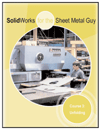Last year, I had the honor of being asked to join the Hospital-Acquired Infection (HAI) Foundation that is committed to help contribute to the goal of reducing and hopefully eliminating HAI that have occurred to so many people who have gone to the hospital with the intent to get better from a sickness, injury, or disease and come down with an infection unrelated to the individual’s original problem while in the hospital. It was a real wake-up call for me to hear that over 90,000 people died from HAI a year, and so this is providing me with an educational opportunity to become better at my job in the building industry.
As an HVAC engineer with years of hospital design experience, I was truly ignorant of the issues associated with HAI as are so many others in the building industry. With the keen interest in LEED® NC and integrated project delivery (IPD), to mention two popular challenges today, I can’t say I have seen a LEED or IPD prerequisite owner project requirements (OPR) document addressing HAI when drafting the building program’s vision and goals.
Currently just over 50 individuals make up the HAIF, bringing a broad range of experience beginning with specialists in the medical field, legal counsel, facility management, designers, and builders, all committed to working together to help achieve the HAIF goal. For my part, I’m on a subcommittee focusing in on the design, construction, and O&M of patient rooms where HAI can easily occur due to the foot traffic coming and going from a patient room.
This standard of care group consists of medical, design, construction, and O&M professionals, and our first assignment has evolved into the creation of an “HAI Designer’s Checklist: Patient Room Infection Reduction” that first focuses on what will be the hospital’s HAI philosophy (infection containment principals) for its specific building program. We are in the preliminary phase of this checklist development, but we do have the beginnings of a template that addresses:
- Design
challenges relative to flow of traffic in and out of the room, health
care procedures (e.g., nursing, housekeeping, and O&M), materials
used, etc.;
- Definitions applicable for
the accurate uses of this checklist;
- Scorecard to analytically choose the optimum materials for the project (fair-good-better-best) for the application and a means to document and justify the decisions made in sync with the OPR.
Right now HVAC engineer’s design systems to deliver the optimum selection for space comfort, operating cost, etc., but do these systems inadvertently contribute to potential infection issues? In particular, as I see it we need to look closely at the terminal units and devices (registers, grilles, and diffusers, etc.) that are located in a hospital space. From a cleaning point of view, are these equipment/devices a source for infection development? Can those little hard-to-clean crevices inherent with joints connecting two pieces of metal panel, or the space between a register and the wall surface, be minimized and/or eliminated with a different design (e.g., radiant panel vs. a floor-mounted fancoil unit may have less seams)? These are the obstacles we are just now looking at as potential spots for infection growth sources.
We don’t have the answers to the problems yet, and this will take a lot of individuals’ and manufacturers’ input, but to expand our standard of design research, wouldn’t it be great if HVAC manufacturers of equipment and devices could join the HAI reduction/elimination quest by investing their own research dollars into this task with input from the medical community - in particular the hospital infection control programs - to make sure their products do not contribute to developing avoidable infections?
Manufacturers, more than the design and construction communities, are known to be leaders in research to produce better product performance and sustainability because they know when they have a better product, they have a better chance of selling it to the building industry. Manufacturers invested millions of dollars each year to continuously improve what they sell while striving to differentiate their product from the competition, so why not take a leadership role in the eradication of infection acquired sickness via a more infection-free product?
Heck, what experienced health care HVAC engineer wouldn’t specify equipment and devices if it was easy to maintain from an antiseptic point of view, while remaining energy-efficient and good for the environment?ES
For more online publications, visitwww.buildingsmartsoftware.com.









